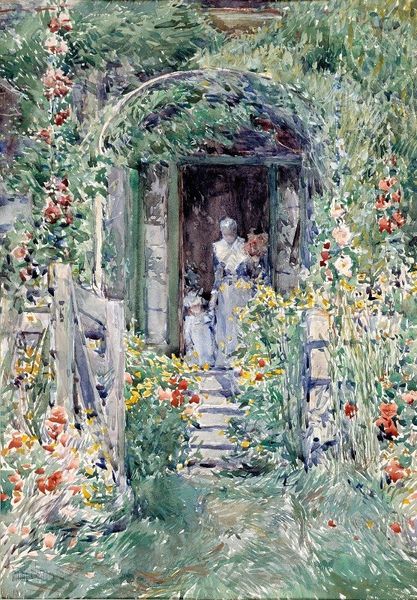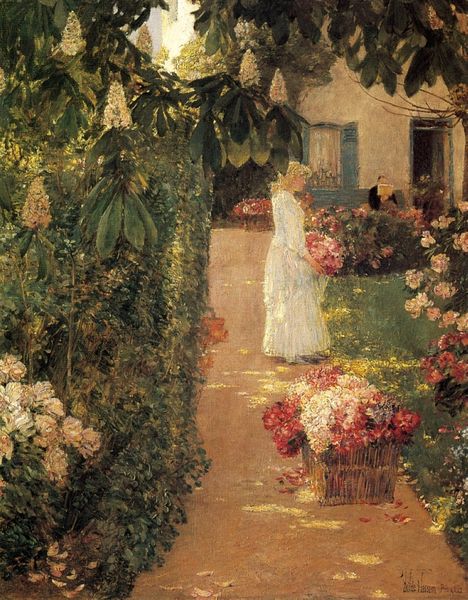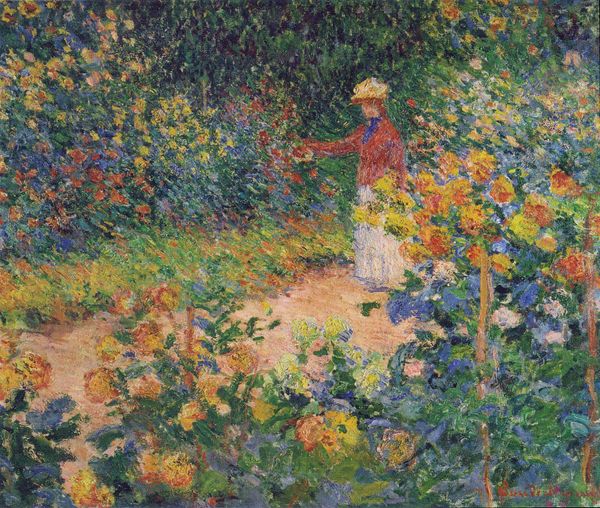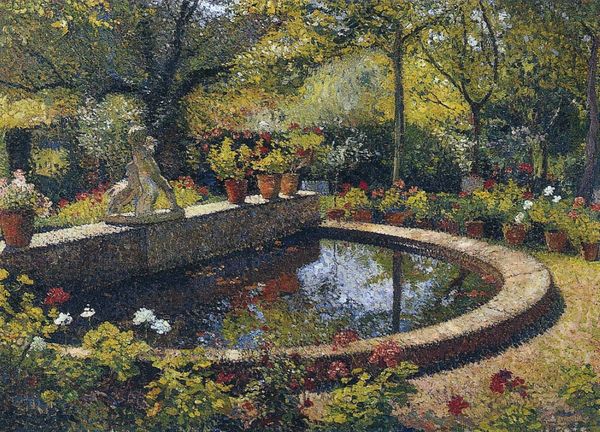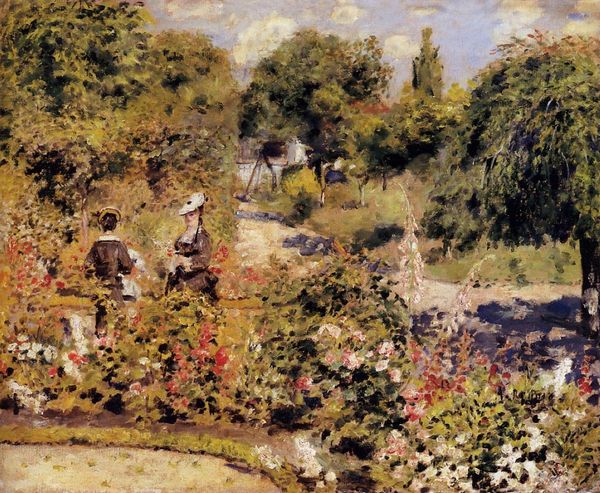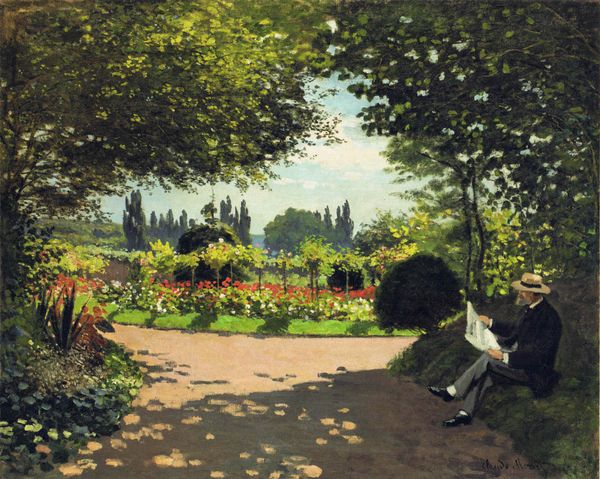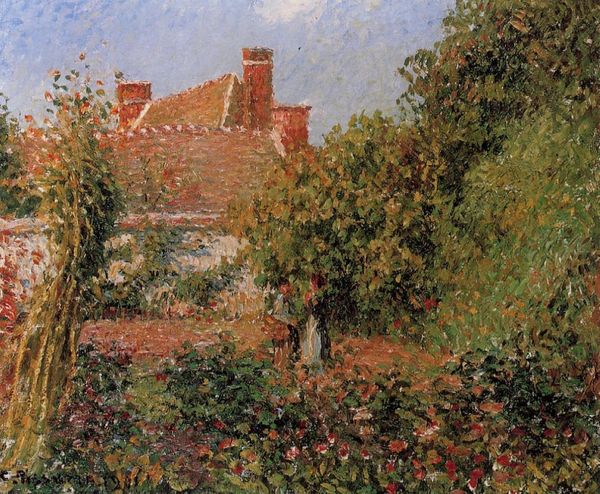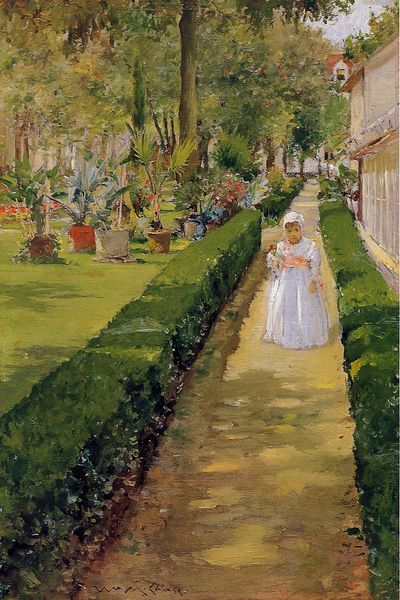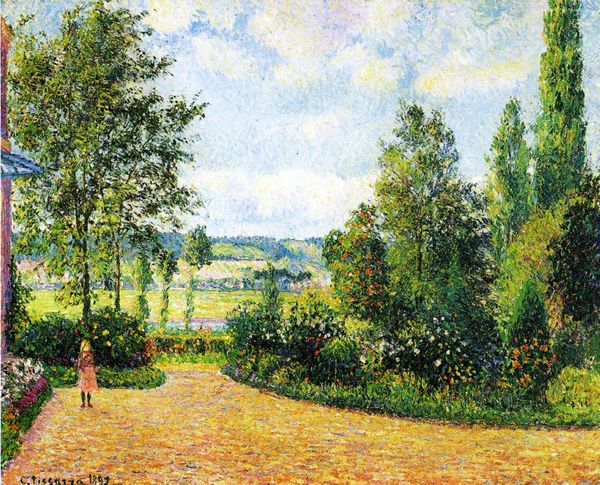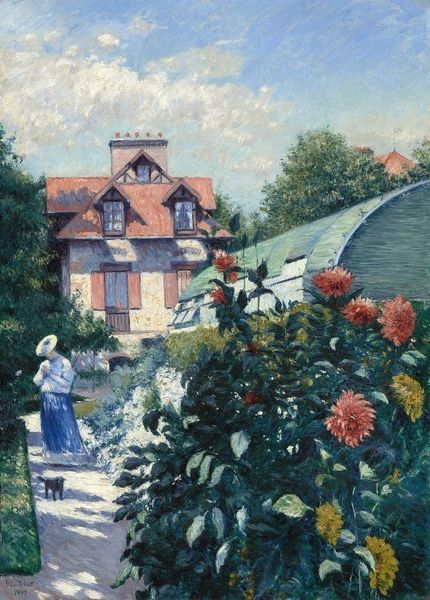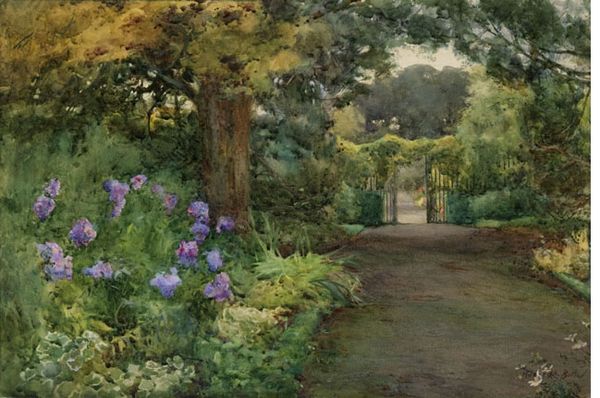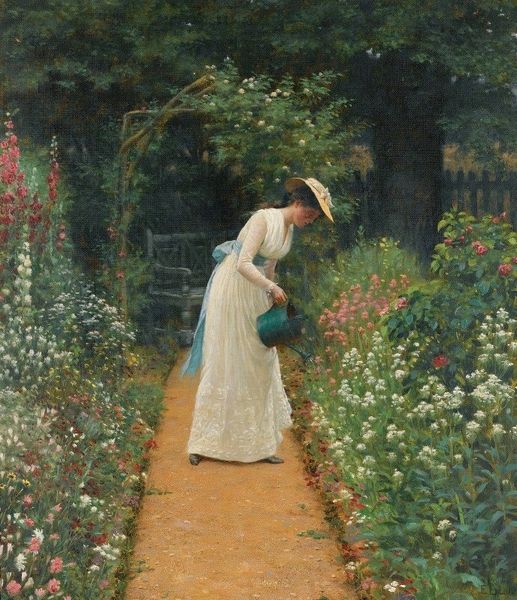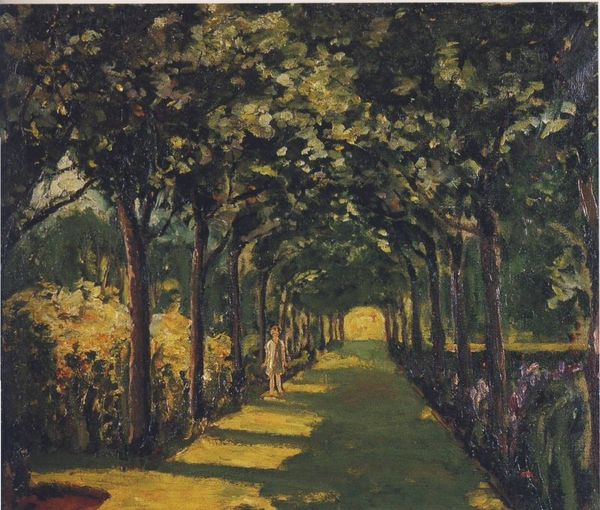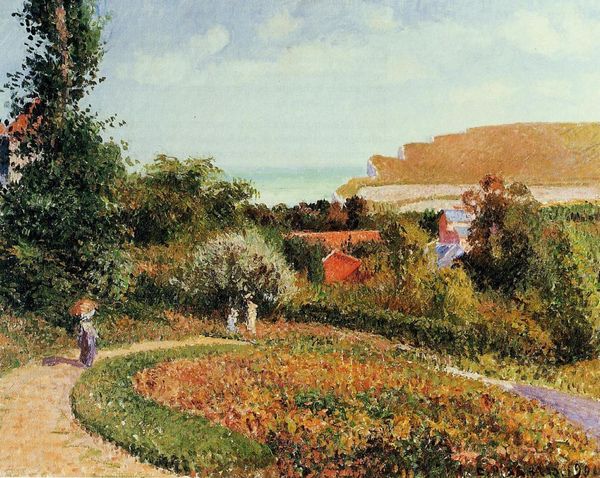
painting, plein-air, oil-paint, impasto
#
painting
#
impressionism
#
plein-air
#
oil-paint
#
landscape
#
impressionist landscape
#
figuration
#
oil painting
#
impasto
#
genre-painting
Copyright: Public domain
Curator: Here we have Pierre-Auguste Renoir's "The Greenhouse," painted in 1876. You immediately sense the impact of plein-air techniques – observe how he renders the atmospheric conditions. Editor: It makes me feel a bit… dizzy. All those petals seem to swirl around. Is that a figure in the middle, almost swallowed up by the blossoms? Curator: Precisely. What interests me is Renoir's brushwork here. Consider the impasto technique. It builds texture and speaks to the sheer labor invested. Notice how he breaks up solid forms into shifting patterns of color. Editor: True, it almost feels as if Renoir is less concerned with accuracy and more interested in the sensory overload of a blossoming garden. It's not just seeing roses; it’s smelling them, feeling the damp air. He isn't afraid of losing the subject in a shimmer. Curator: And consider the context of the rising middle class in Paris during the 1870s. There was growing demand for leisure and cultivation of domestic space as subjects of art. Gardens like these reflected that growing wealth and lifestyle, almost literally bringing nature inside for closer inspection and arrangement. Editor: I also can't help but feel there is a hint of melancholy. Like even at the height of its beauty, something wild is being contained and shaped for another's vision. Like us looking at the canvas now; the picture captures a controlled bloom forever. It also gives a romantic idea about impermanence of our earthly matters! Curator: Indeed, art preserves a moment, objectifying it even as it romanticizes the mundane. The material realities – paint, canvas, labor – mediate our connection to nature here. The consumption of "The Greenhouse" also serves as a commodity. Editor: It's that duality, isn't it? This painting captures something intensely felt. Even the materiality whispers how difficult, but sublime it is, trying to capture on flat space a 3-D moment. Like a perfume extracted, some beauty will invariably fade, and other things stay. Thanks, now I have to go contemplate my mortality. Curator: An insightful point! Renoir's lush work ultimately allows for us to meditate about natural consumption and aesthetic experience alike.
Comments
No comments
Be the first to comment and join the conversation on the ultimate creative platform.
